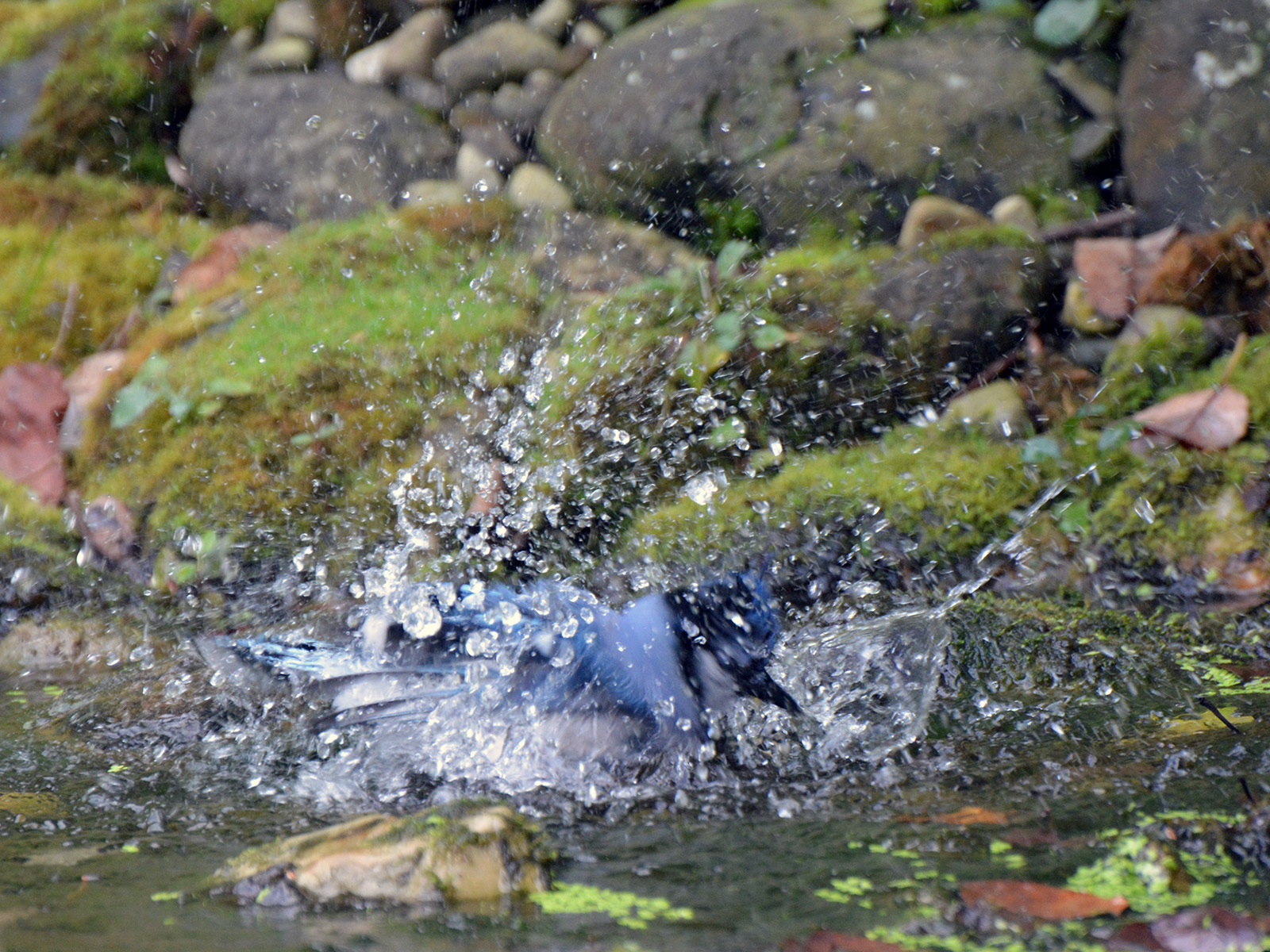
Feathers are more than decoration. For a bird, they’re an essential part of their mobility and survival. They get a lot of wear and tear, so they have to be kept in good working order by keeping them clean, well-oiled, and free of parasites. Birds do this in various ways, all very interesting to watch.
In the stream
Birds enjoy bathing in our stream and, less often, in our pond. We have more warblers visiting during migration since we created our water features.
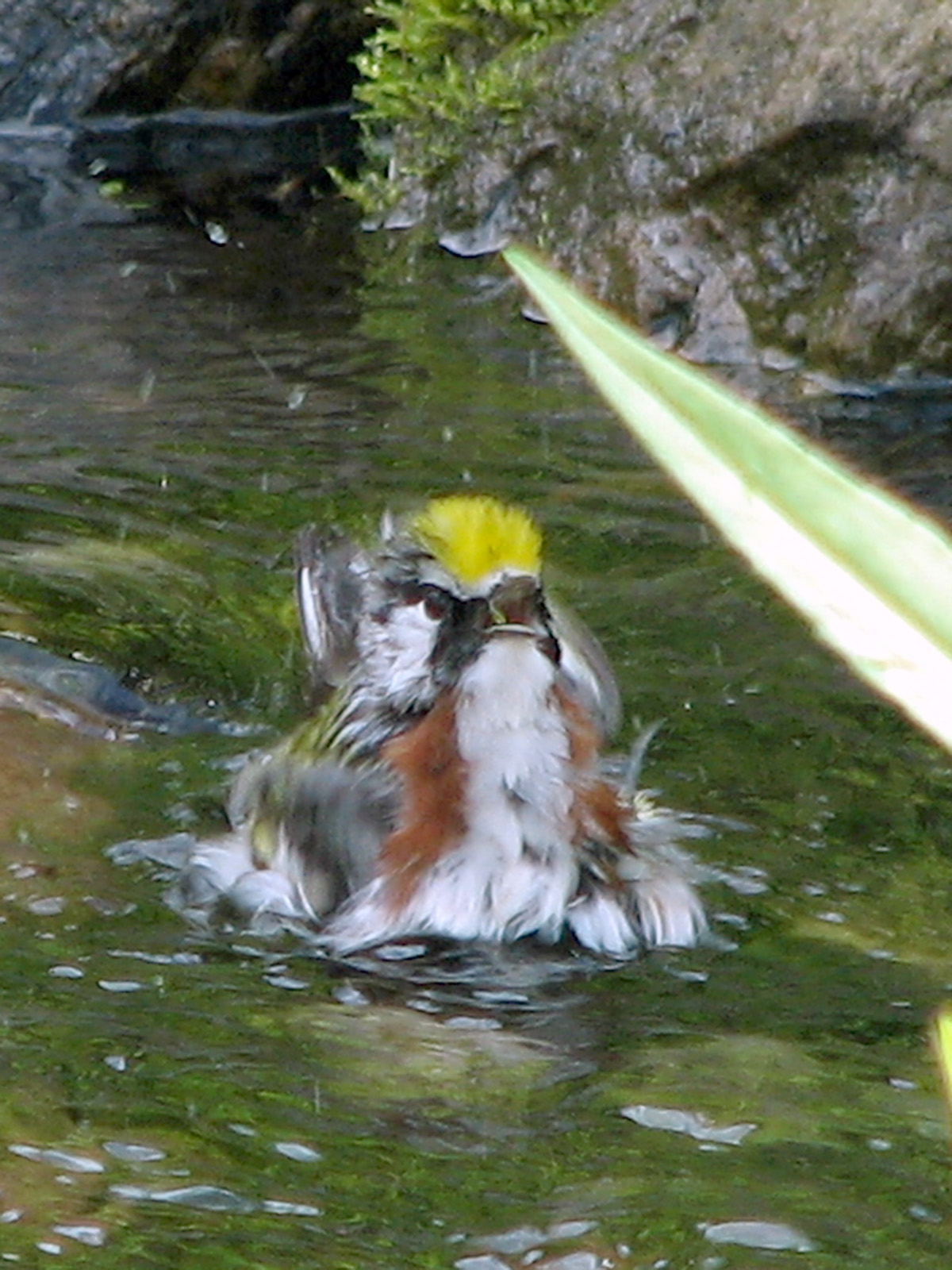
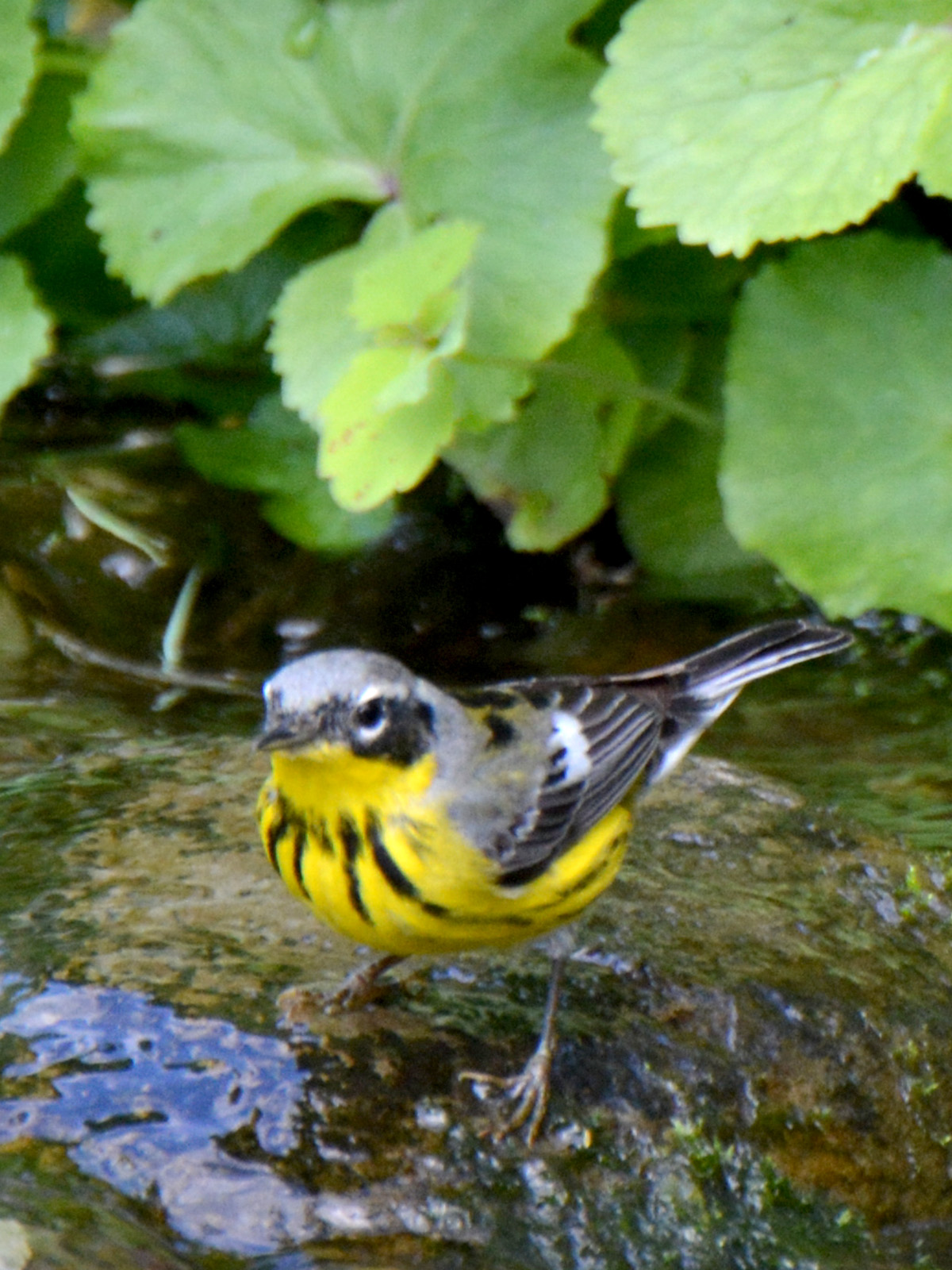
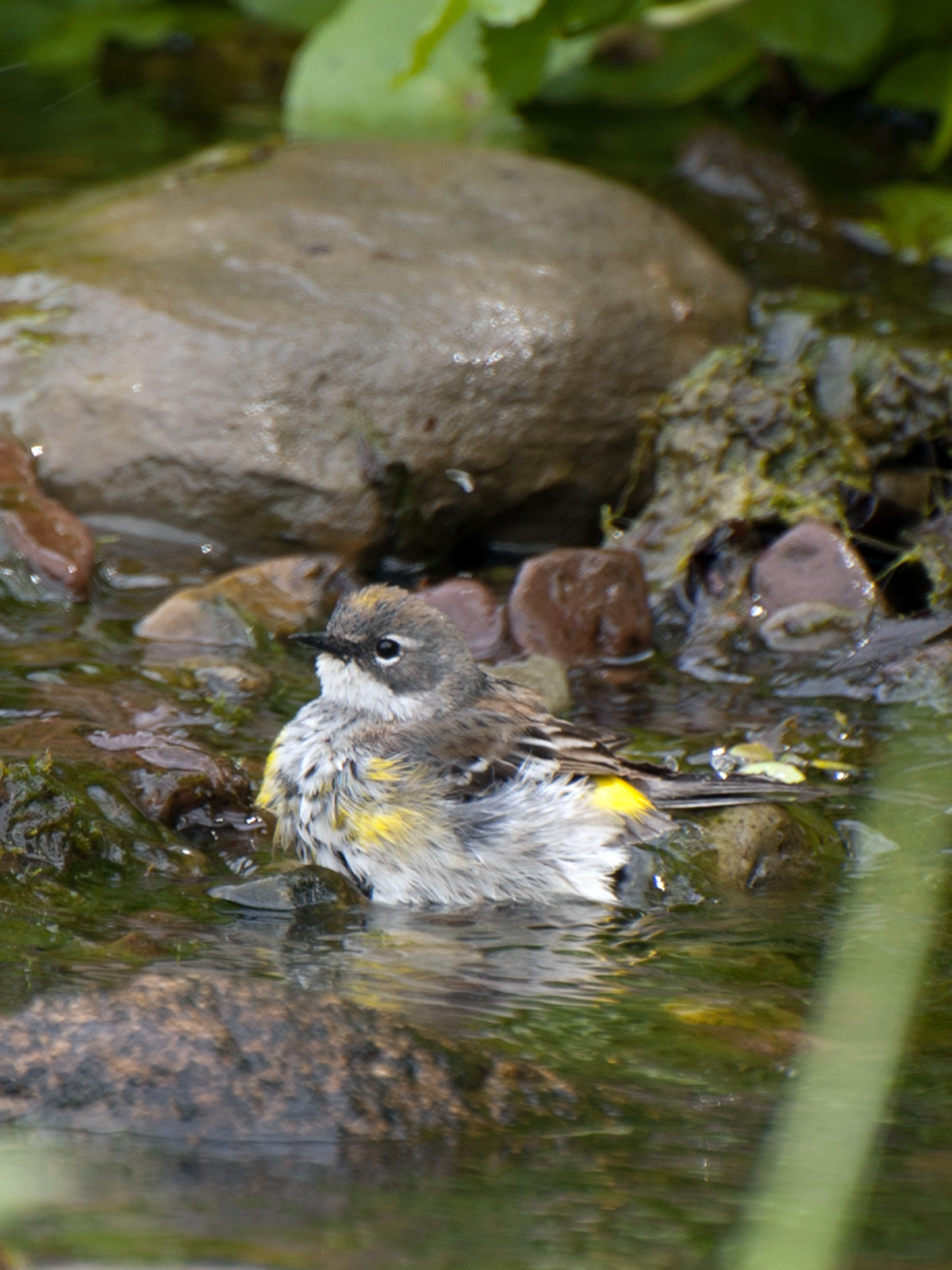
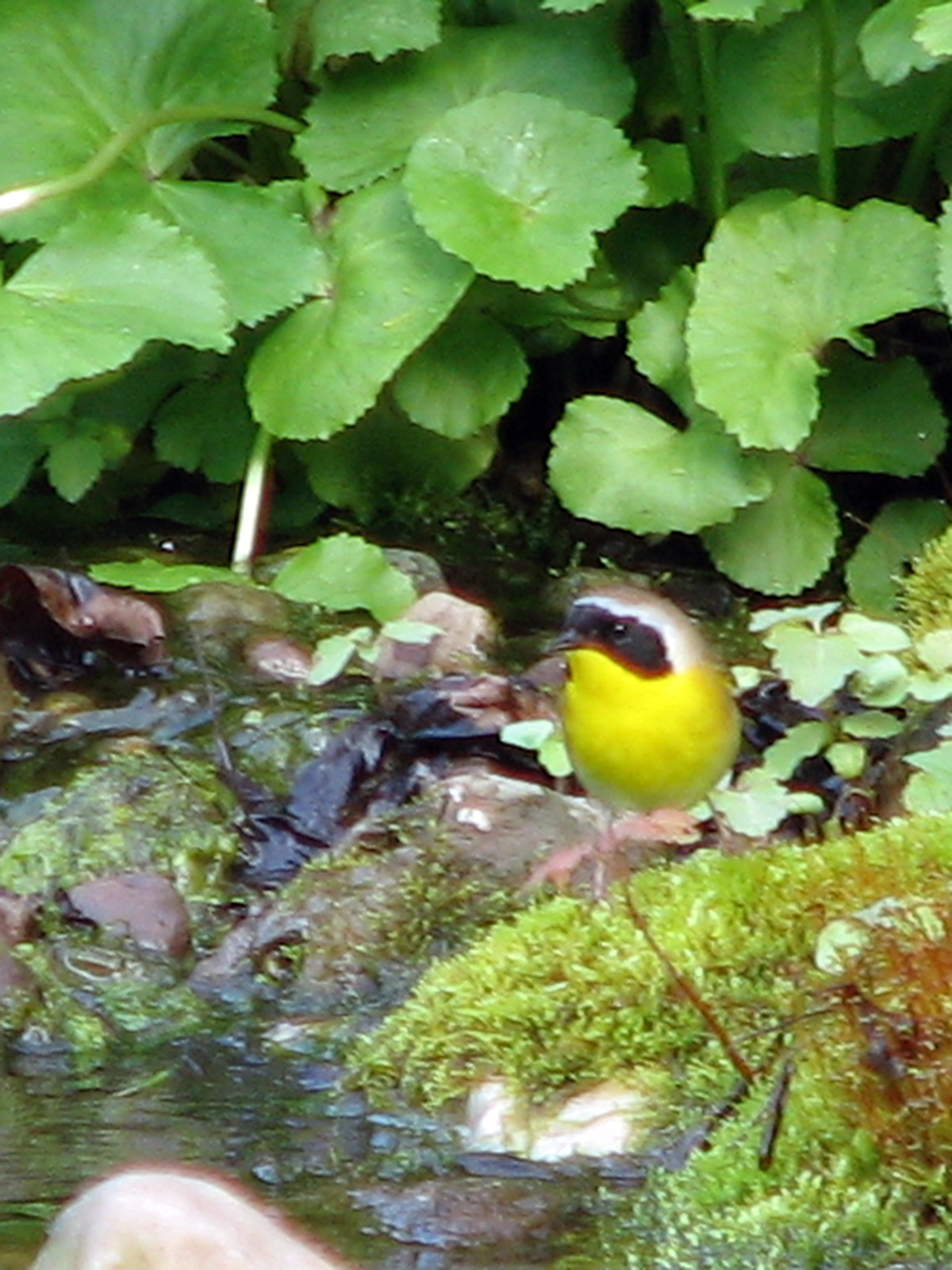

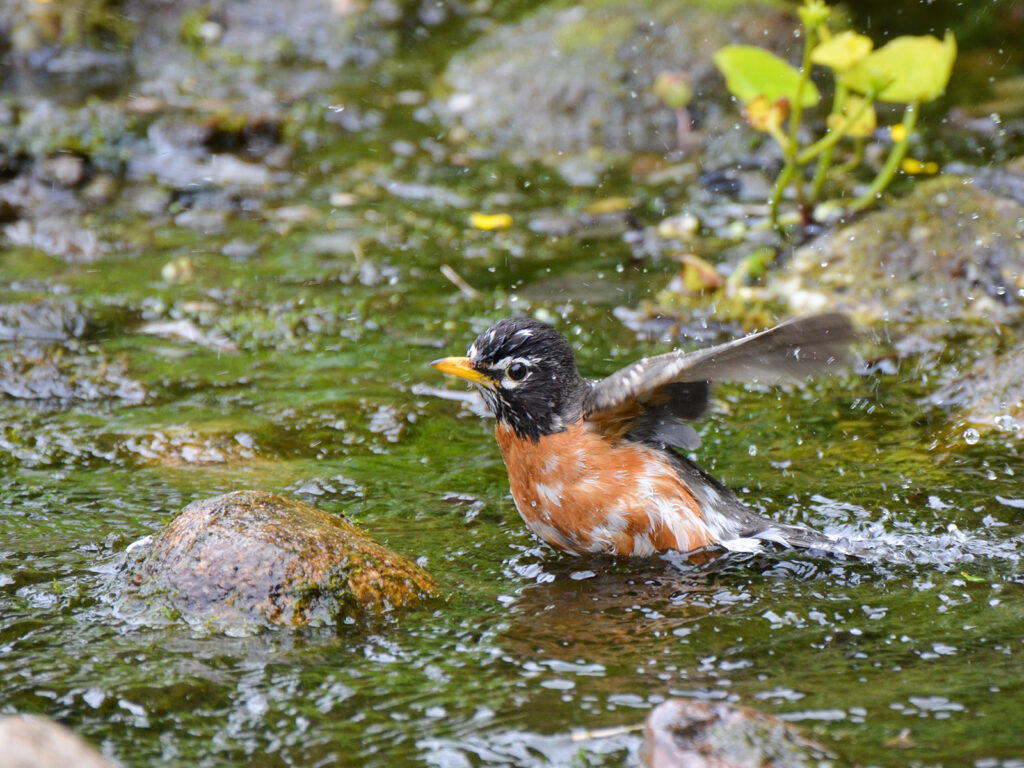
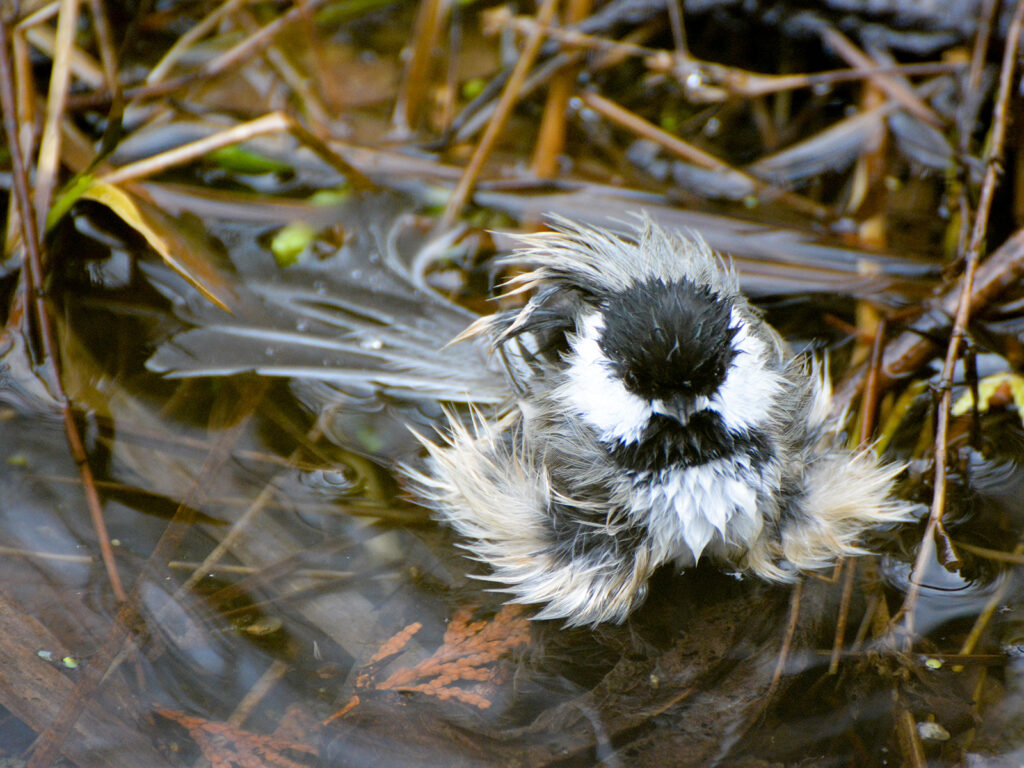
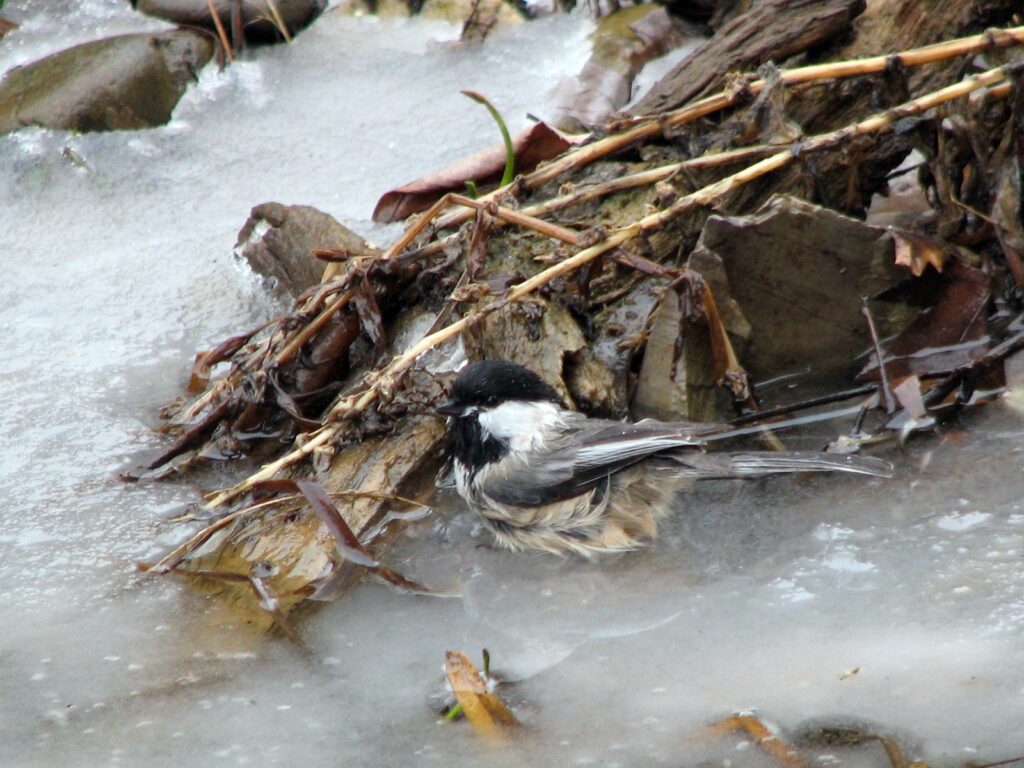
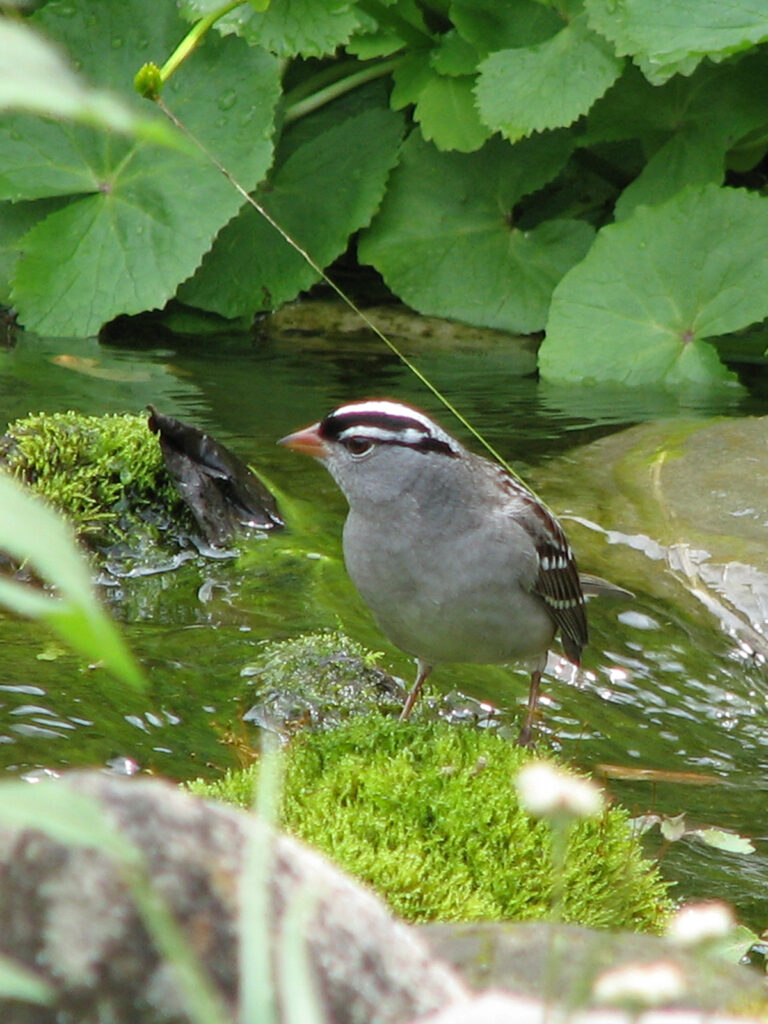
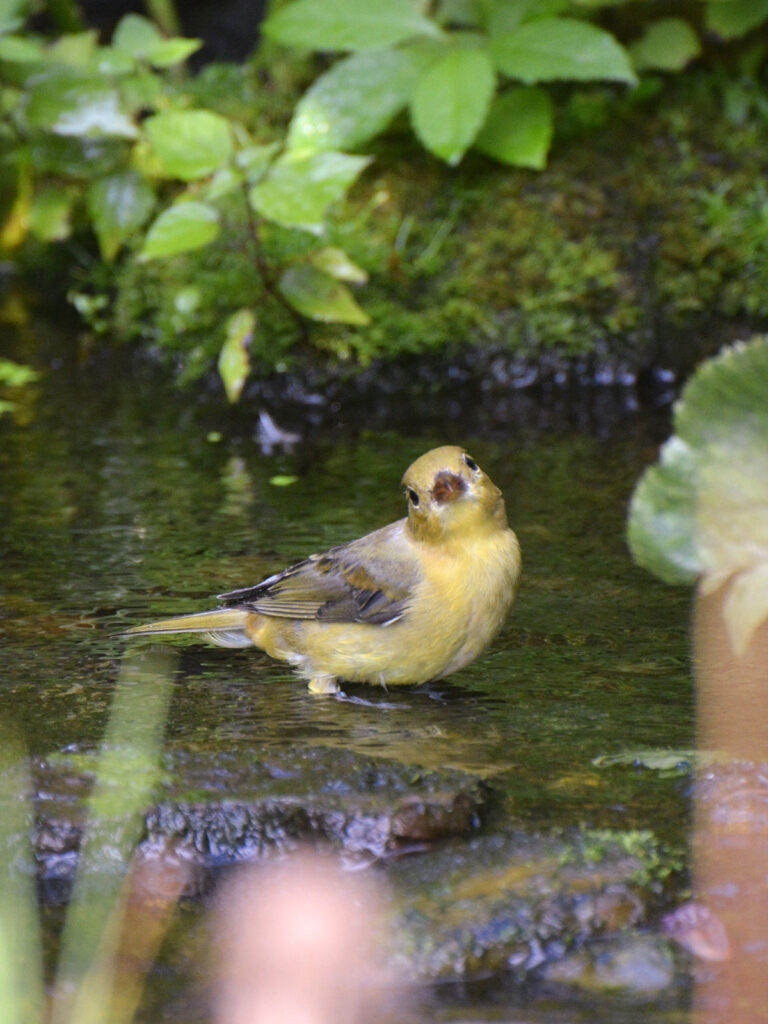
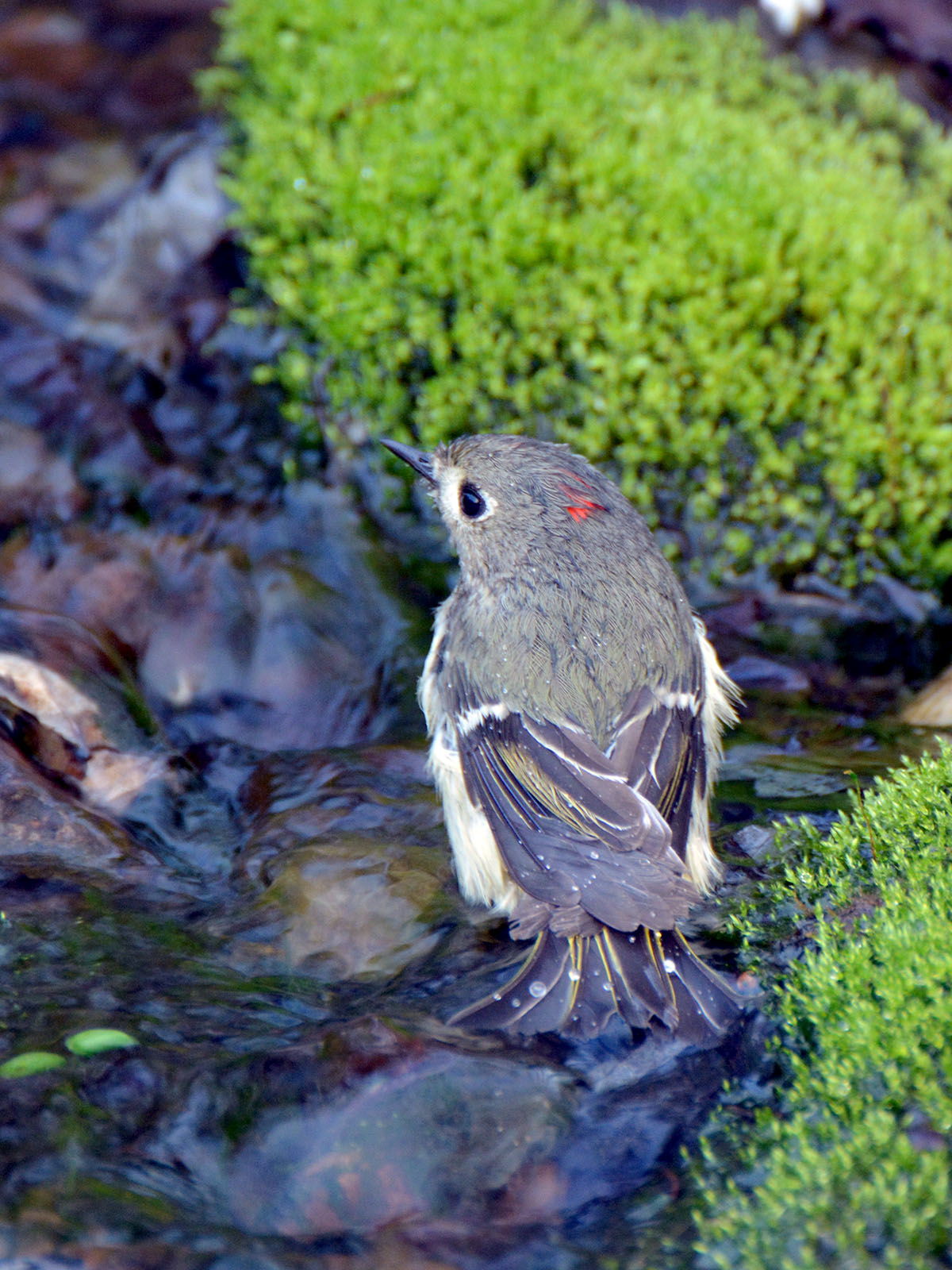
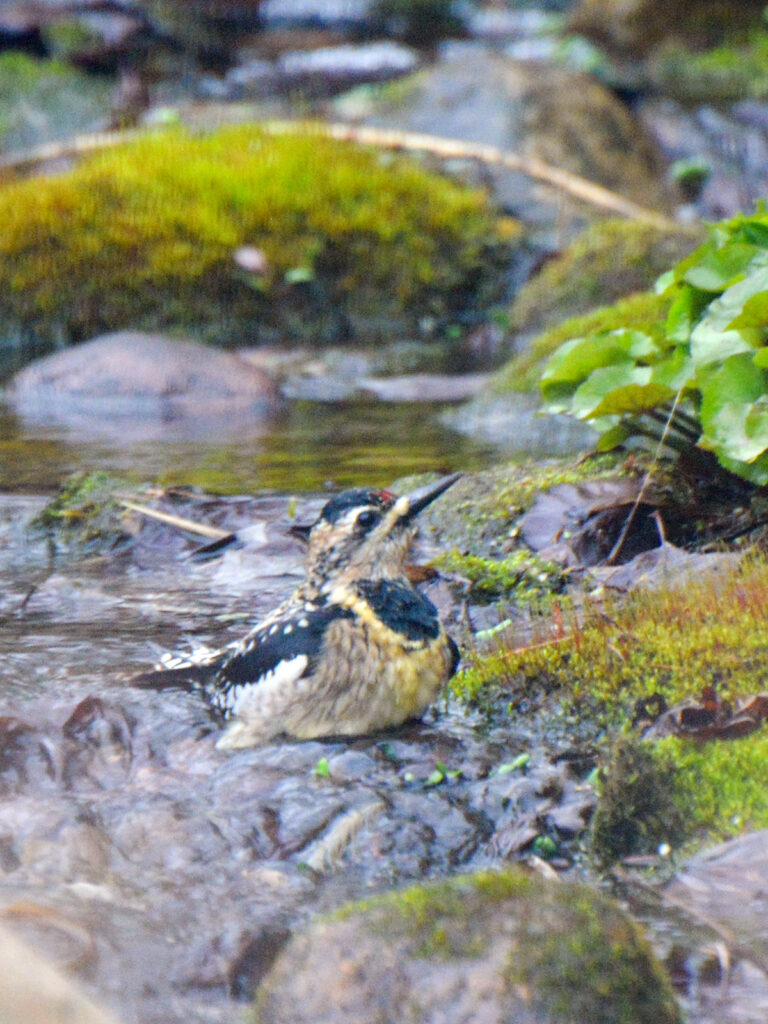
We enjoy seeing yellow-bellied sapsuckers, but we don’t see them often. We were glad we had a stream for his bath!
We were amazed to see this hummingbird apparently bathing in our stream’s waterfall.
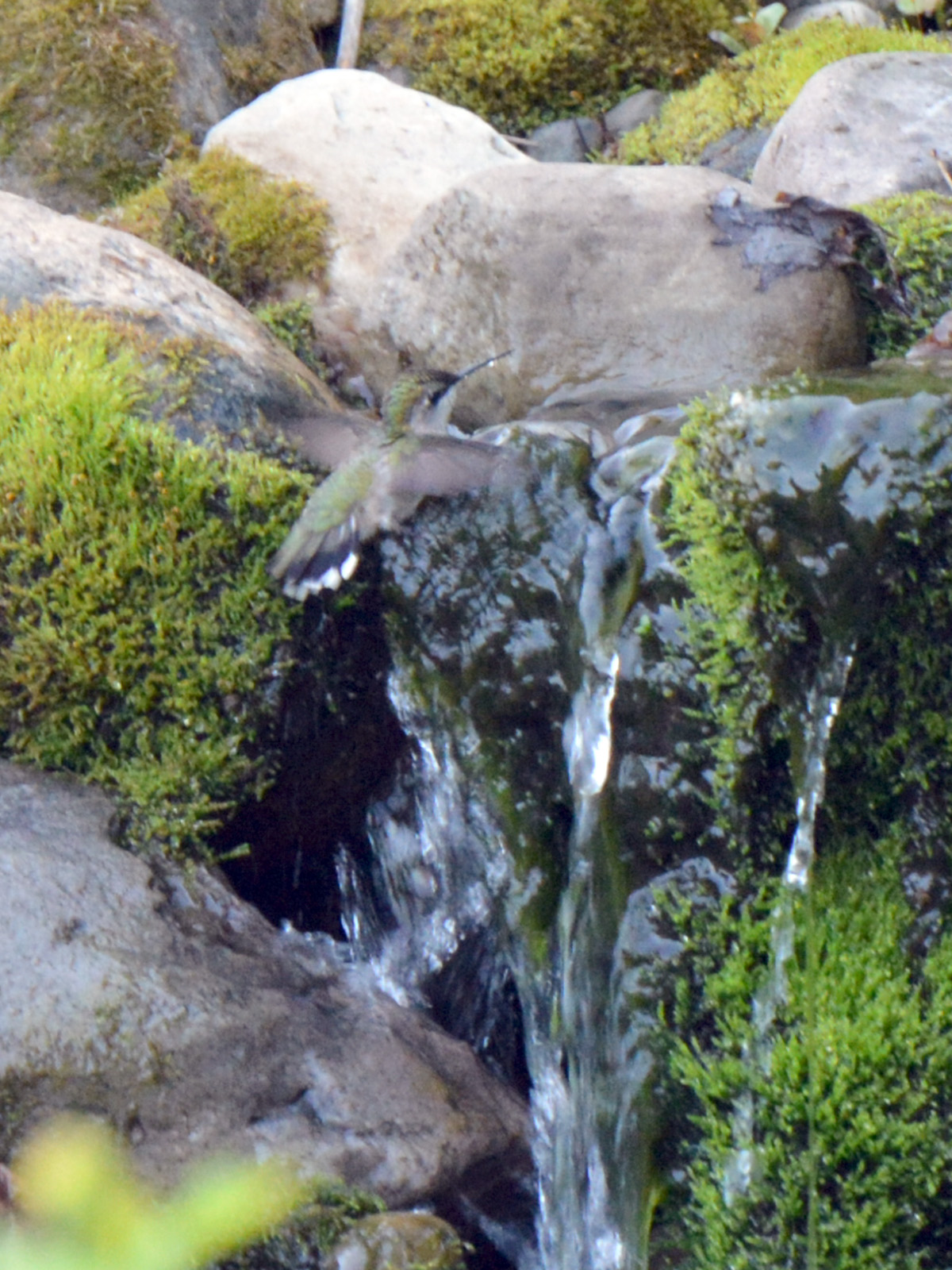
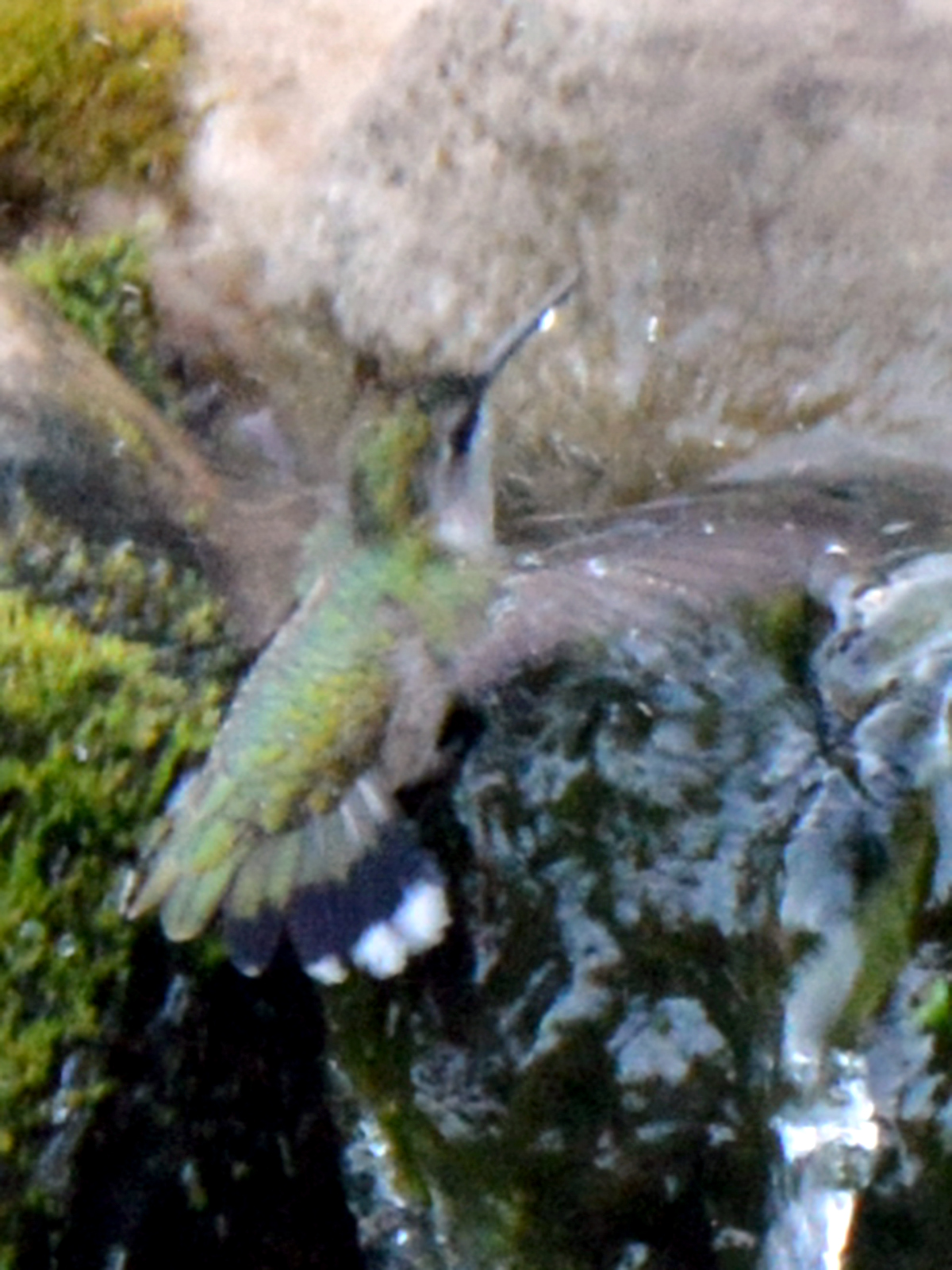
Sun bathing
When we first saw the chickadee on our mat, I almost stepped on it, then I thought it was dead. What a relief to see that it just taking a sunbath!
Why do birds sunbathe? Besides warmth and drying, Audubon says that research is showing that it’s a way to rid their bodies of parasites.
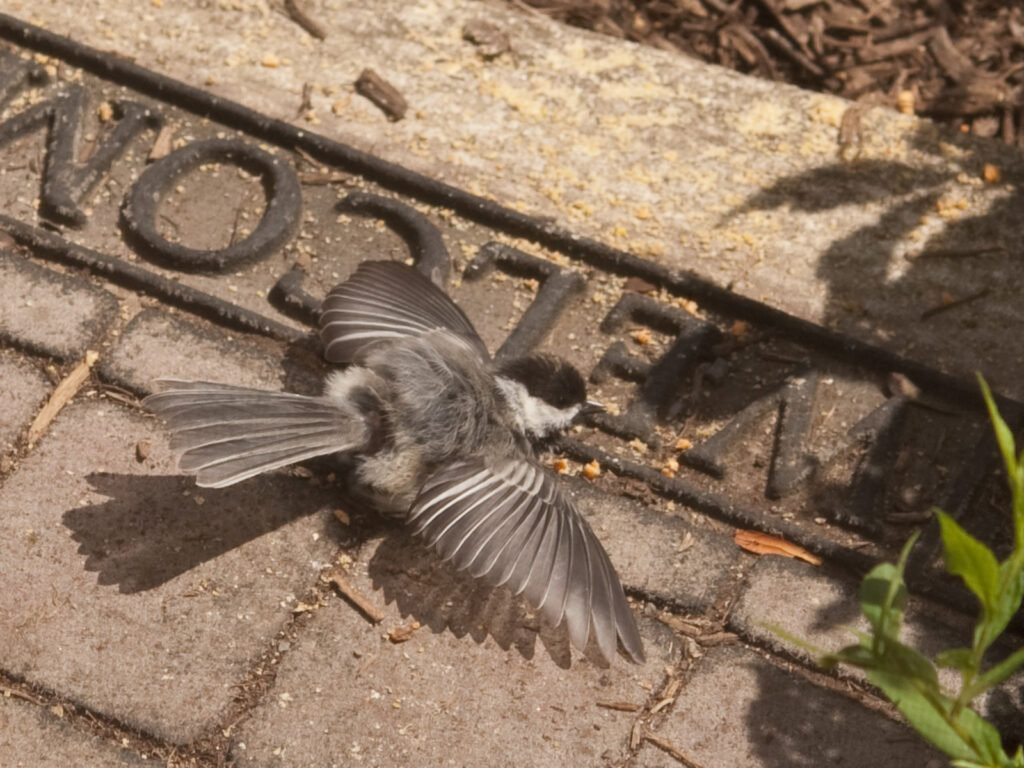
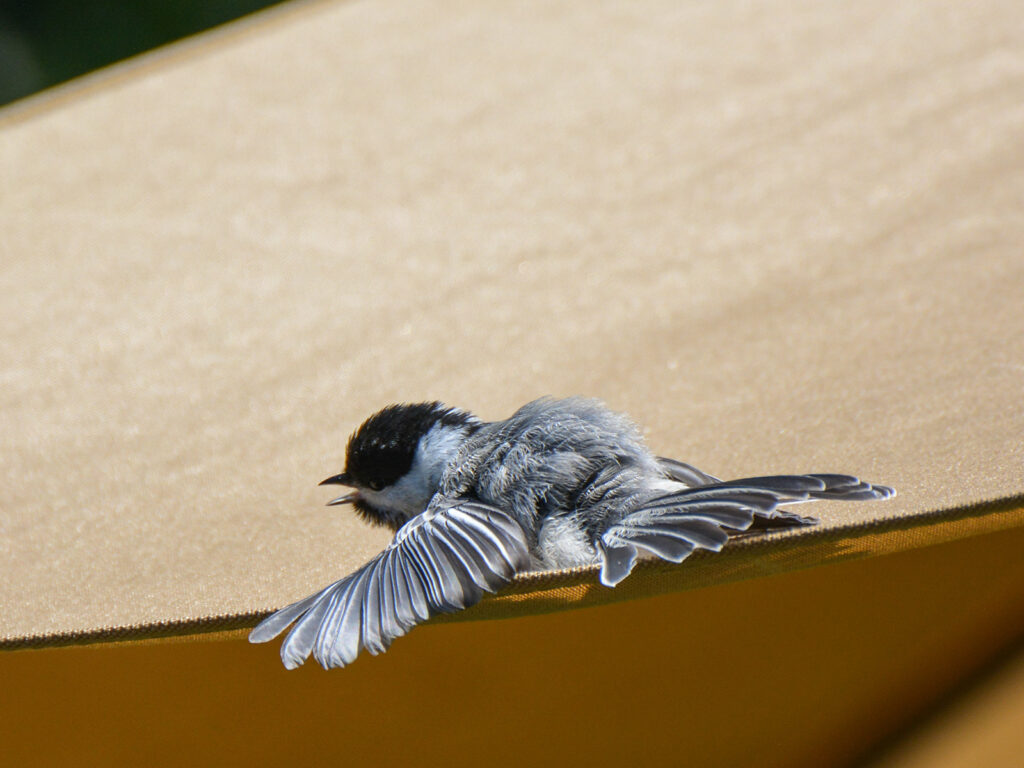
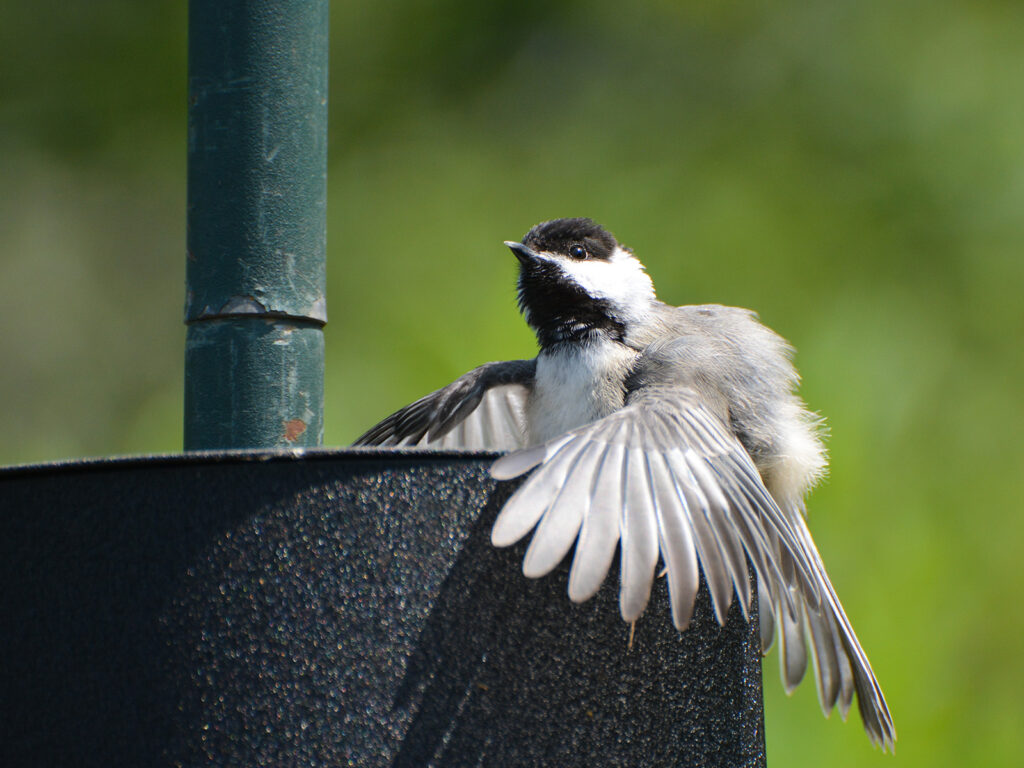
Laying on the edge of our patio umbrella was an equally strange location, as was the metal stovepipe baffle.
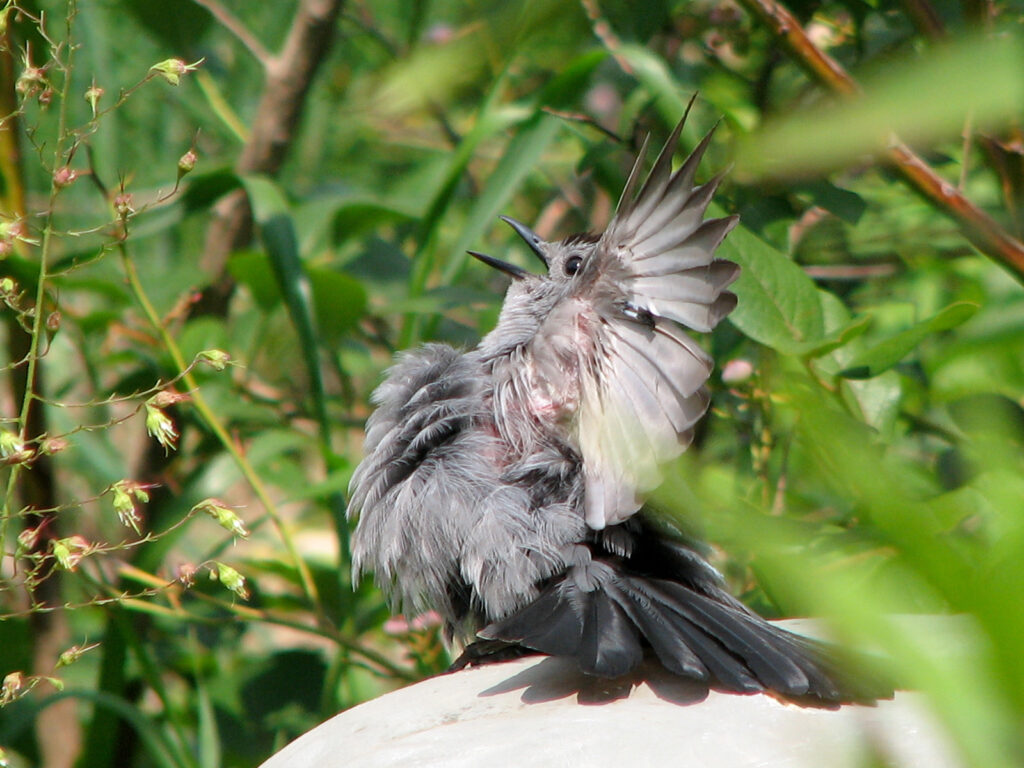
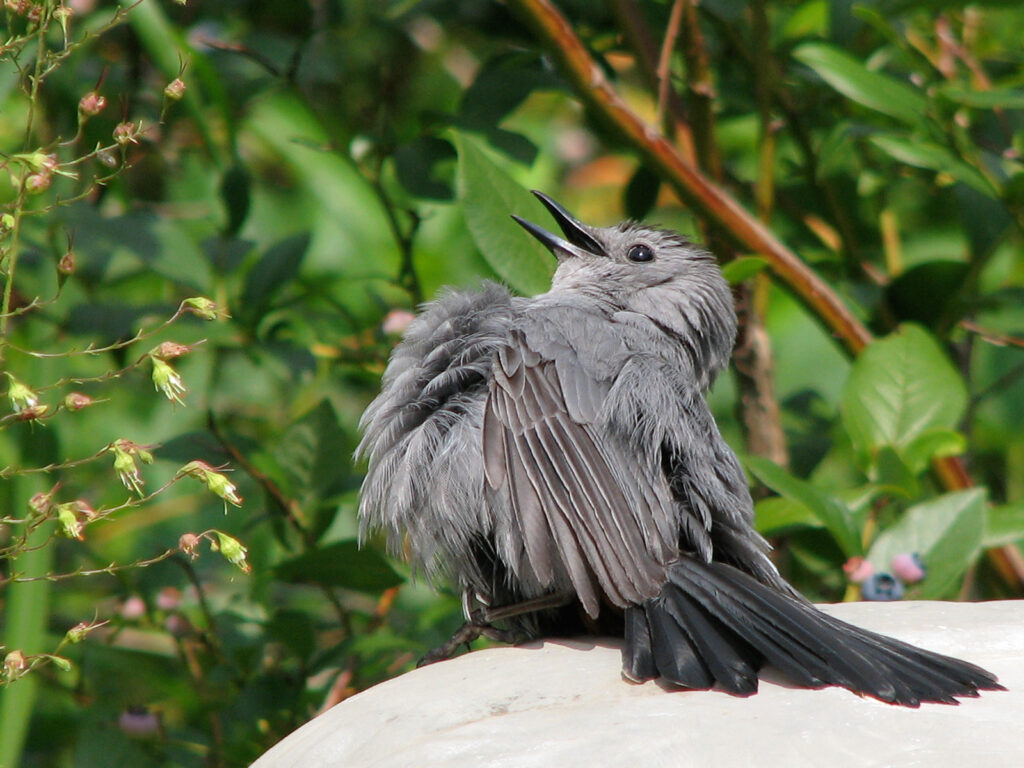
This catbird is enjoying himself on a birdbath turned upside down mushroom-like on its pedestal.
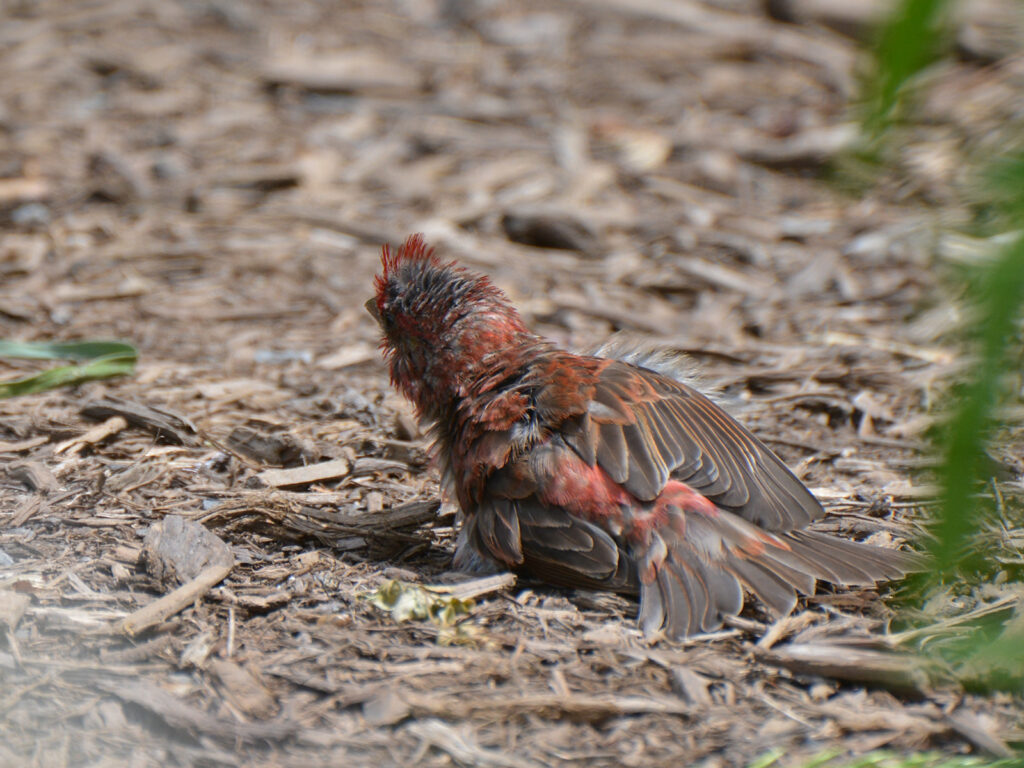
We don’t often have purple finches (usually only the house finches), but this one took some time to take a sun bath while visiting.
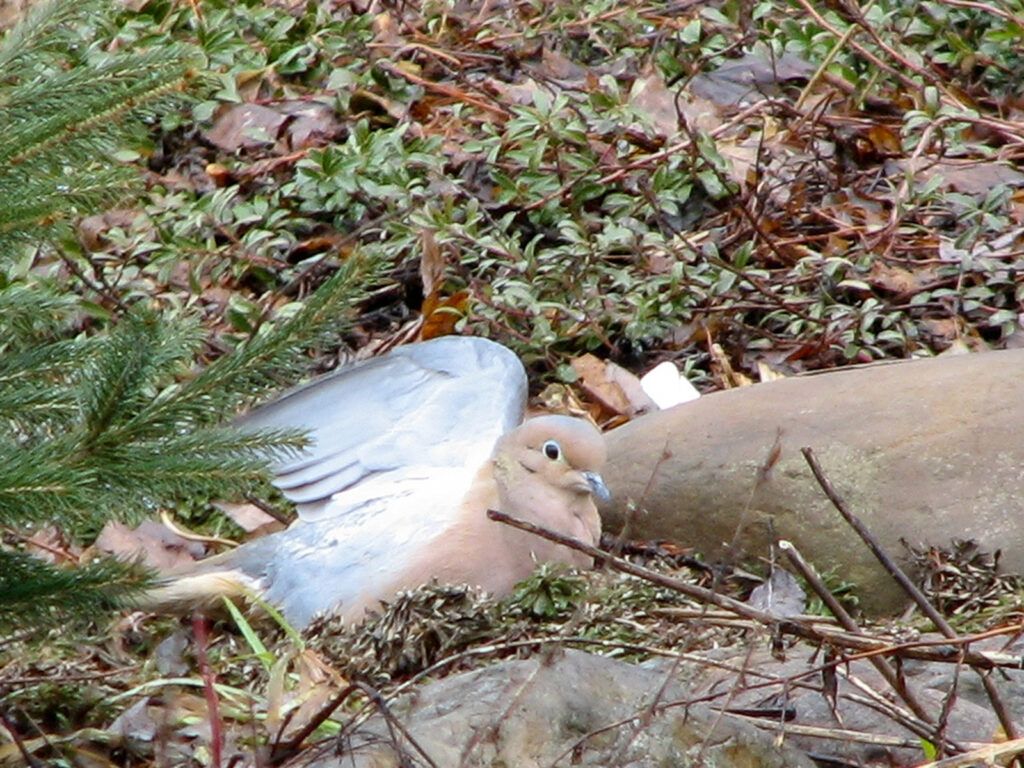
We often see mourning doves with their wings raised to the sun. The first time we saw this behavior, we thought he had a broken wing!
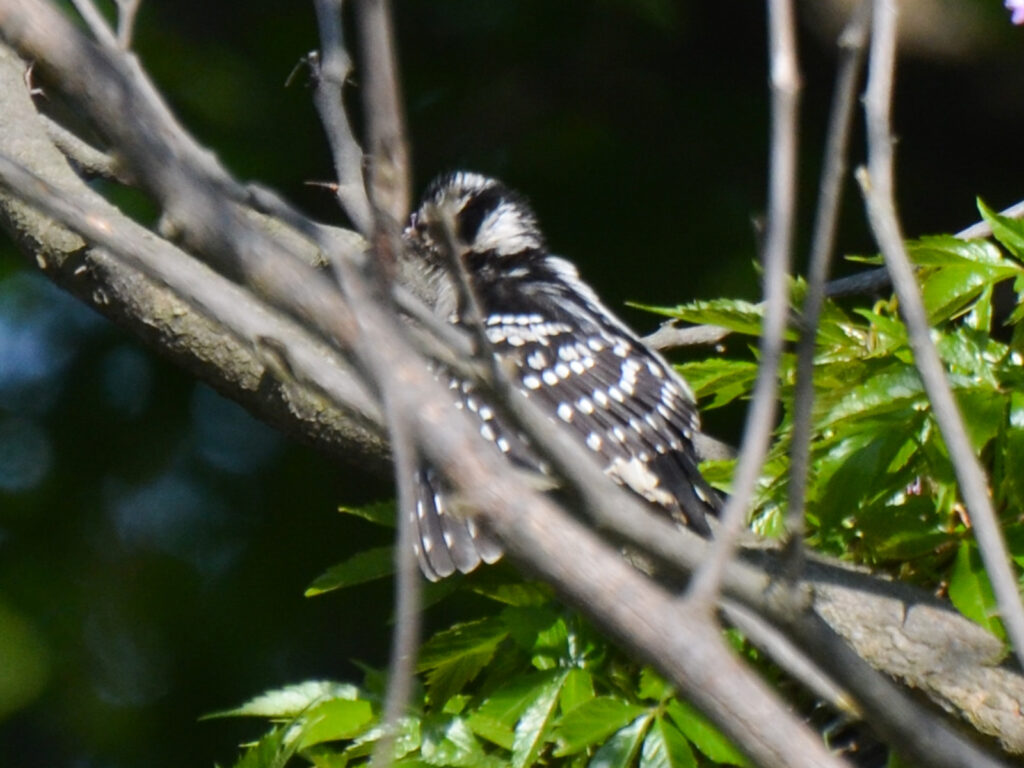
This downy was sunning himself on a limb of the redbud tree, laying motionless just soaking up the sun.
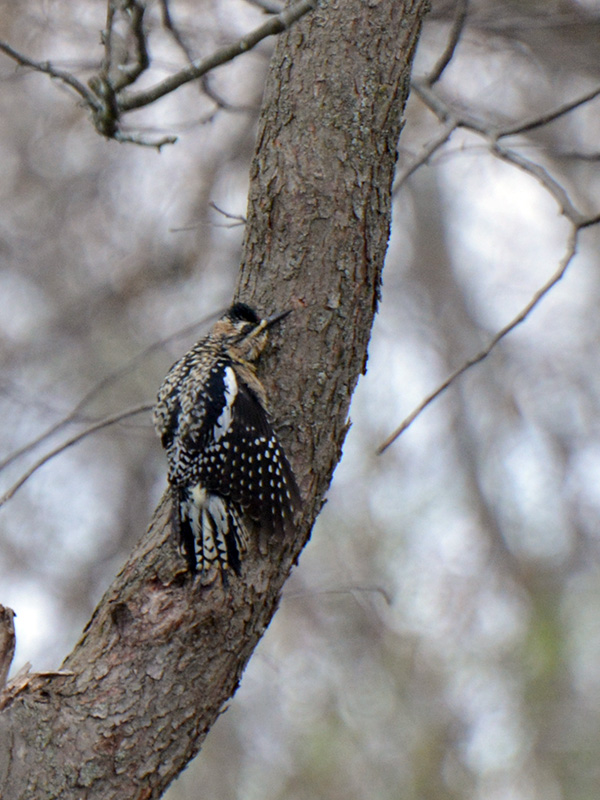
And a yellow-bellied sapsucker!
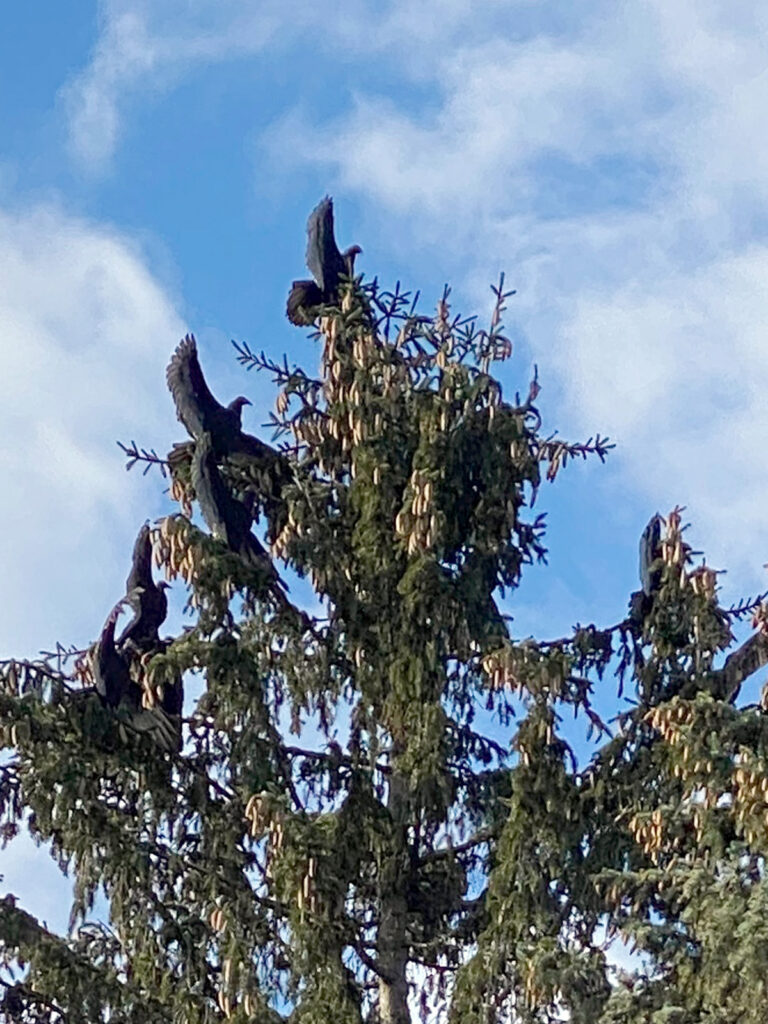
On our walk to Wegmans one day we were amazed to see a large group of turkey vultures at the top of some tall trees, apparently sunning themselves.
You can see only a few in the photo, but there were at least a dozen, all holding their wings up in the same direction and all virtually motionless.
On our return trip home with our groceries on our backs, we saw dozens of vultures circling around.
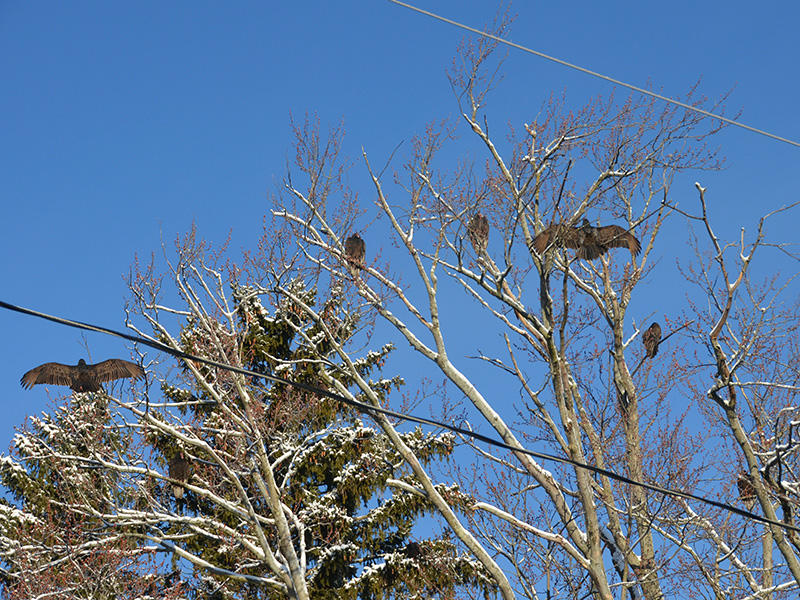
Then a few years later, I saw more than a dozen turkey vultures flying low over our house. When I happened to look out our front window, there they were, sunning themselves motionlessly on a few trees across the street.
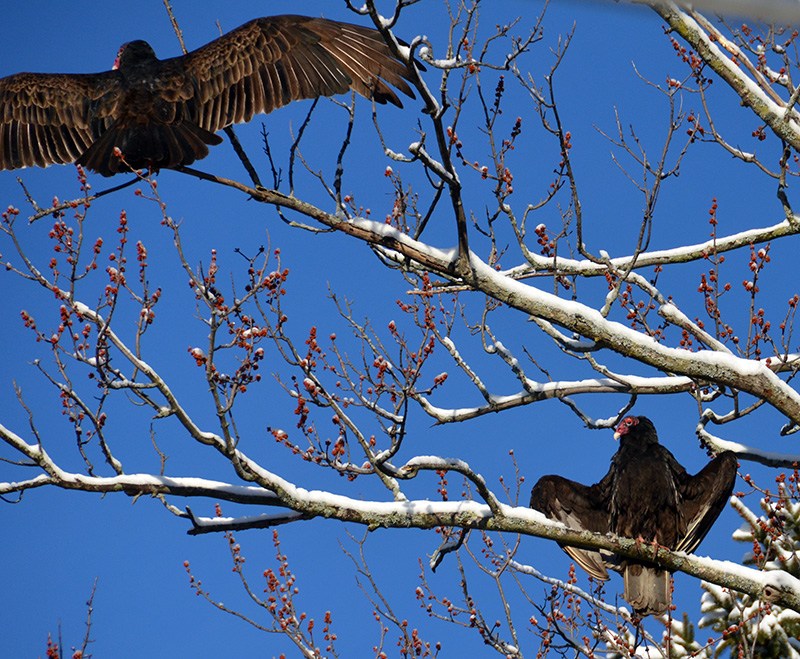
Turns out that’s part of its migration behavior!
I wish people understood how valuable these special birds are!
Imagine a world without their dead animal removal services!
Dust bathing
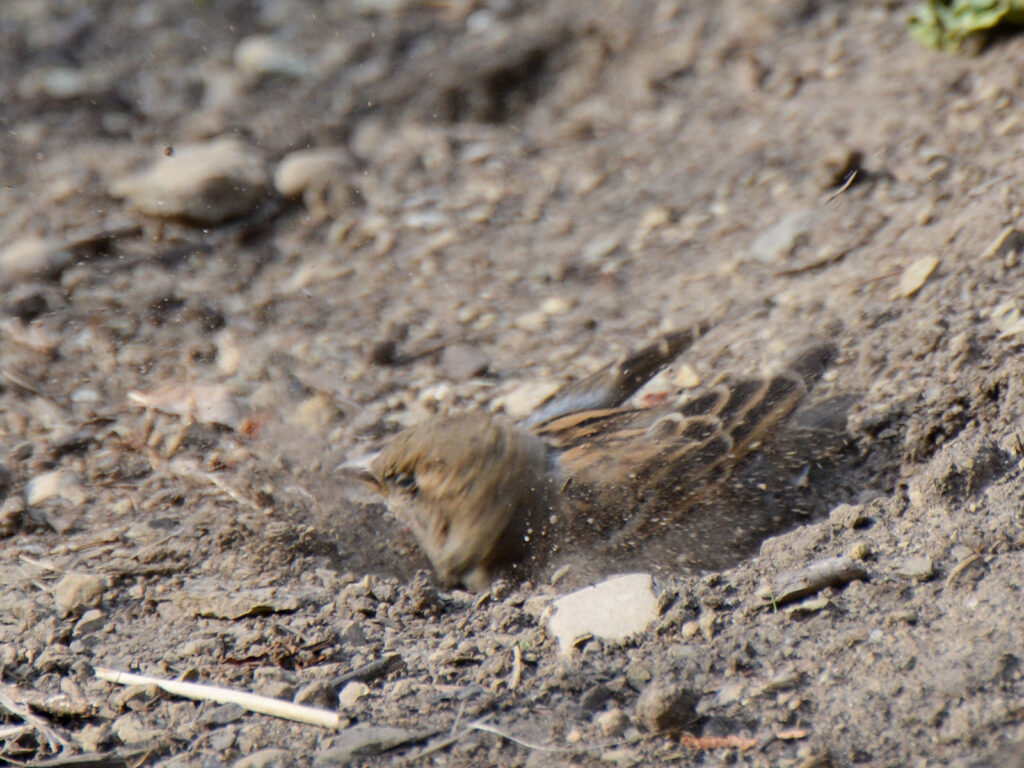
It always has puzzled me how a bird can get clean by fluttering around in the dust! In our yard, I’ve seen only house sparrows doing this.
Unfortunately, they generally choose our vegetable garden to do this — a problem if we’ve just planted vegetable seeds.
Showering?
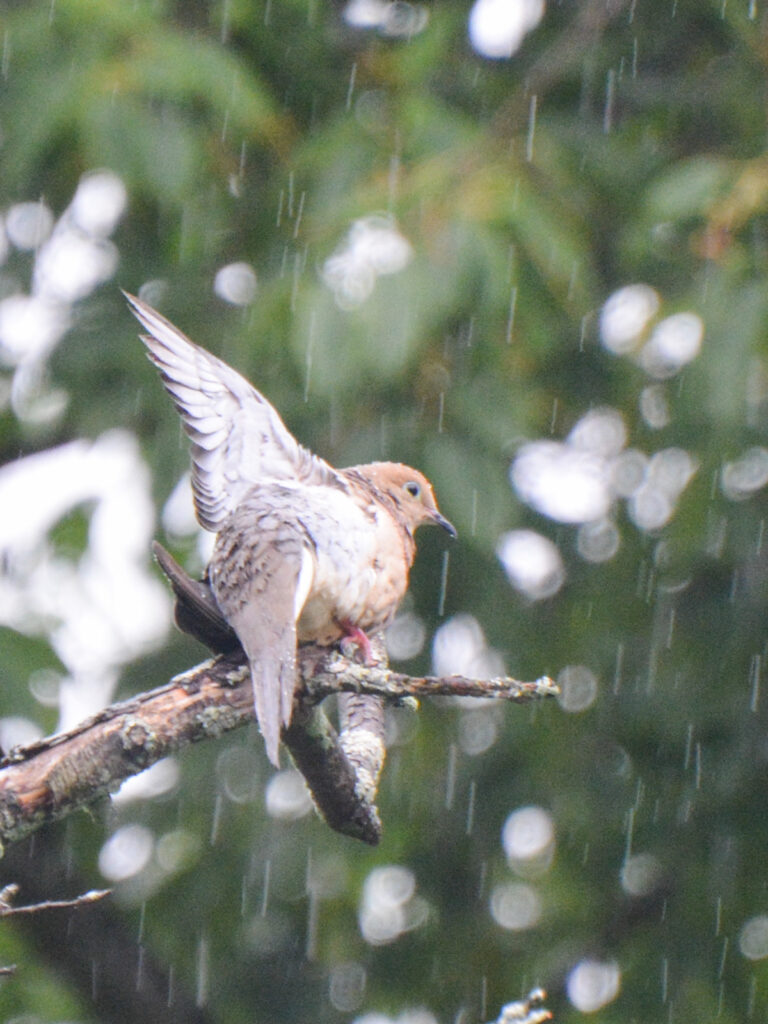
During a light shower one morning I looked out at the pear snag and saw two mourning doves apparently “showering”! Each of them were raising a wing, exposing their underwing area to the rain. This continued for quite a while.
That’s the first time I’ve seen this behavior, but maybe I haven’t spent enough time looking out the window during a rain shower.
Preening
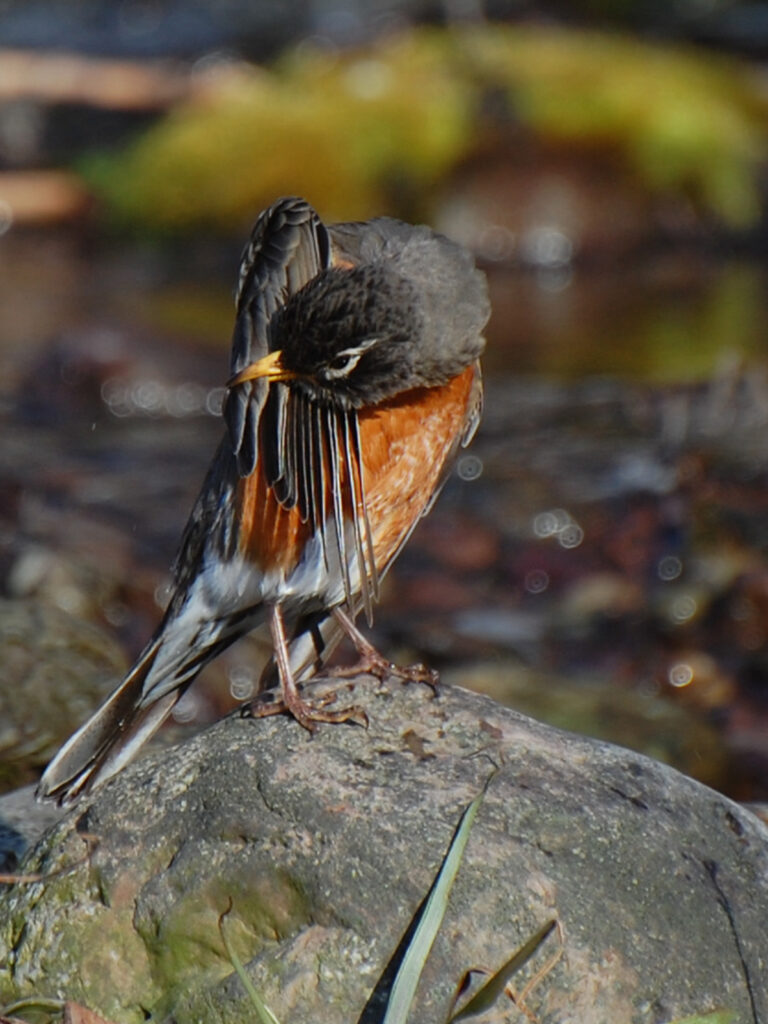
After bathing, birds preen.
Preening is an important way birds keep their feathers in good flying order, keeping all the parts of the feather clean, aligned properly, and interlocked for smooth air flow when they’re flying.
In fact, it’s so important that they have a special oil gland (the “uropygial gland”) that provides oil for coating their feathers to maintain their function. This gland is visible when they’re sunning, which apparently helps soften and spread the preening oil.
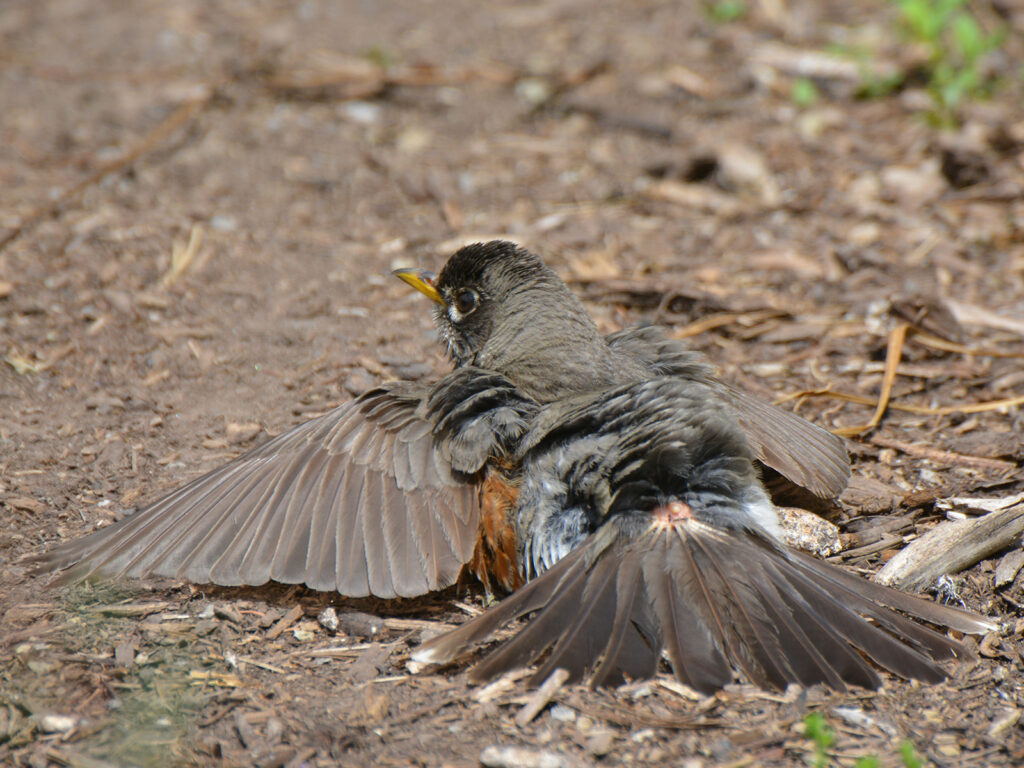
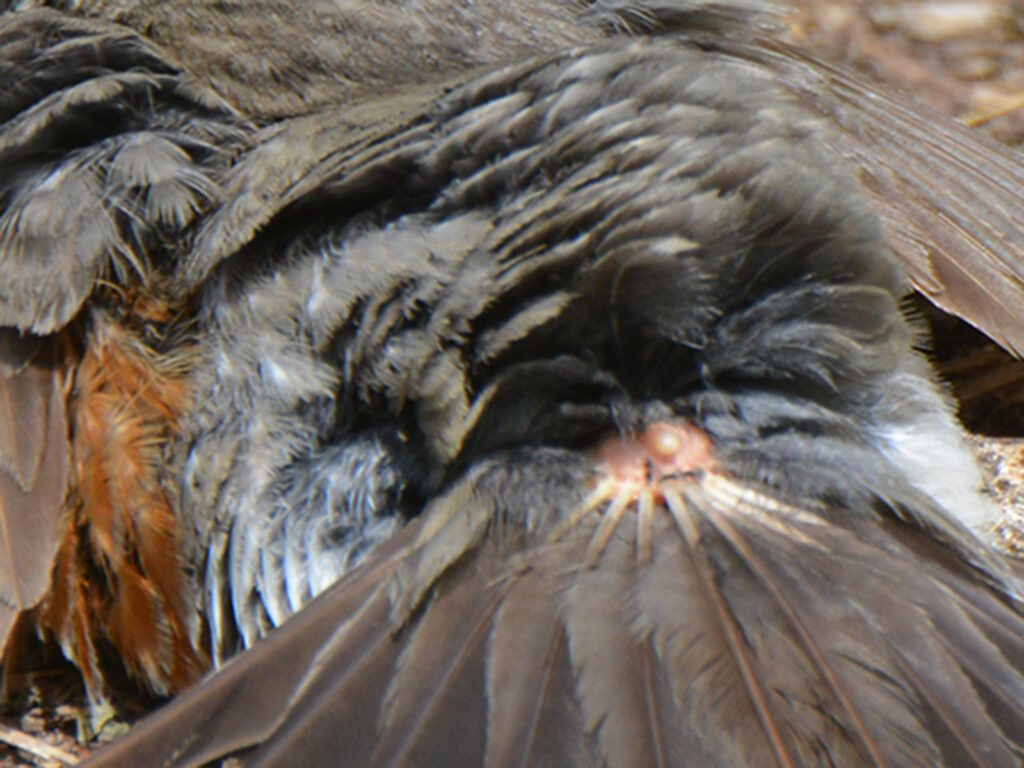
Even hummingbirds preen! It must not be easy to preen with such a long beak!
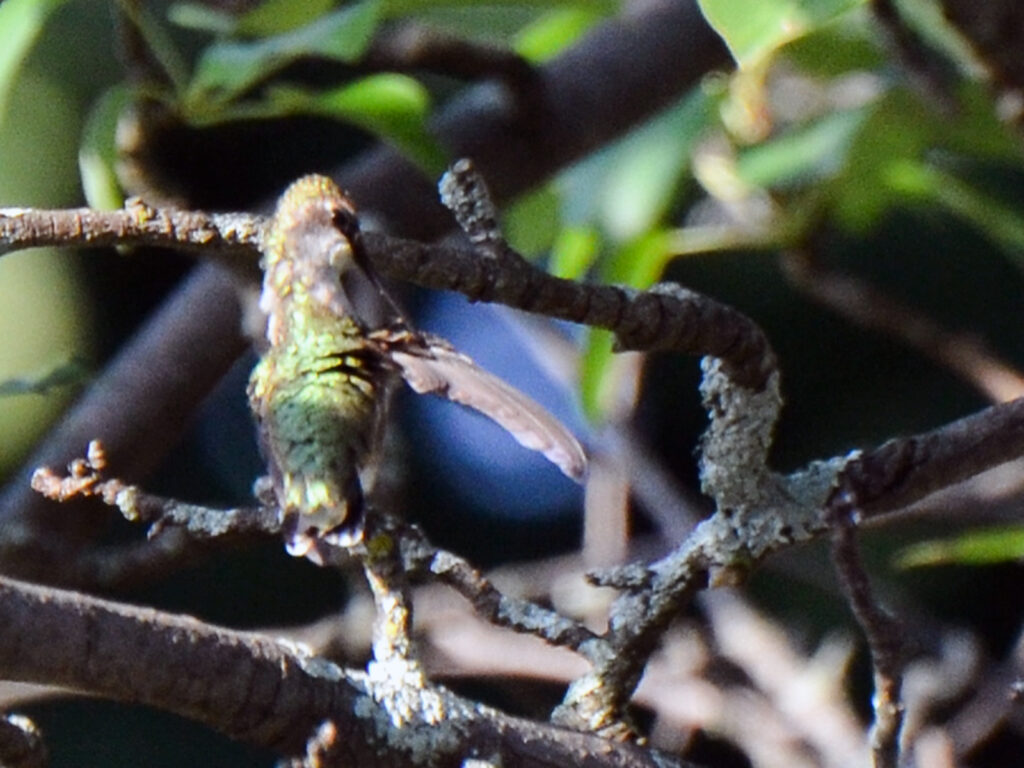
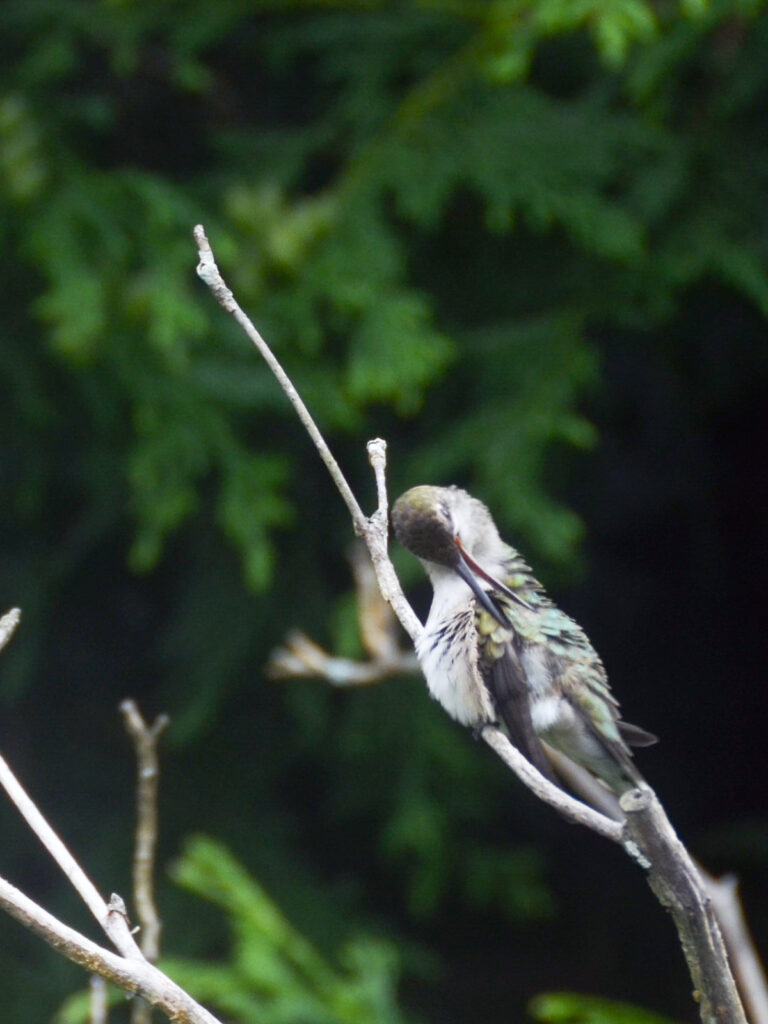
Resources
- Audubon:
- Lesley the Bird Nerd:
- Scientific American:
- World Bird Sanctuary:
- Sunbathing – Avian style (has photo of a turkey vulture sunning)
- Cool Green Science:
